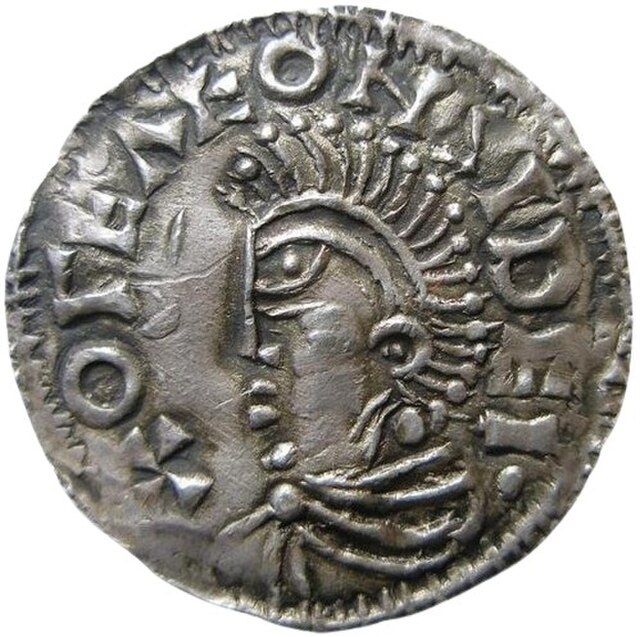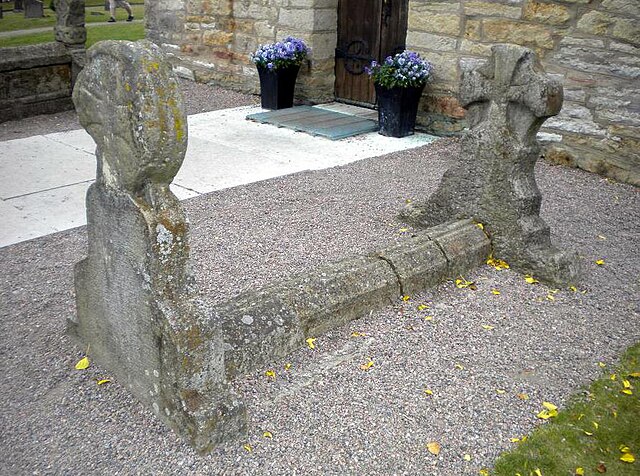Anund Jacob or James was King of Sweden from 1022 until around 1050. He is believed to have been born on 25 July, in either 1008 or 1010 as Jakob, the son of King Olof Skötkonung and Queen Estrid. Being the second Christian king of the Swedish realm, his long and partly turbulent reign saw the increasing dissemination of Christianity as well as repeated attempts to influence the balance of power in Scandinavia. Throughout his reign, he tried to subvert the rising Danish hegemony in Scandinavia by supporting the Norwegian monarchy. He also supported the reign of his brother-in-law Yaroslav the Wise in Kievan Rus. He is referred to in positive terms in German and Norse historical sources. His reign was one of the longest in Sweden during the Viking Age and Middle Ages.
Silver coin minted during reign of Anund Jacob c.1020-1030
King Ane's Stone at the suggested burial site of King Anund Jacob
Olof Skötkonung, sometimes stylized as Olaf the Swede, was King of Sweden, son of Eric the Victorious and, according to Icelandic sources, Sigrid the Haughty. He succeeded his father in c. 995. He stands at the threshold of recorded history, since he is the first Swedish ruler about whom there is substantial knowledge. He is regarded as the first king known to have ruled both the Swedes and the Geats. In Sweden, the reign of king Olov Skötkonung is considered to be the transition from the Viking age to the Middle Ages, he was the first Christian king of the Swedes, who ruled central Sweden. Norse beliefs persisted in parts of Sweden until the 12–13th century.
Coin minted for King Olof in Sigtuna
Olof Skötkonung as imagined by Ansgar Almquist in the 1920s, statue at Stockholm City Hall.
The alleged Olaf Grave at Husaby Church





